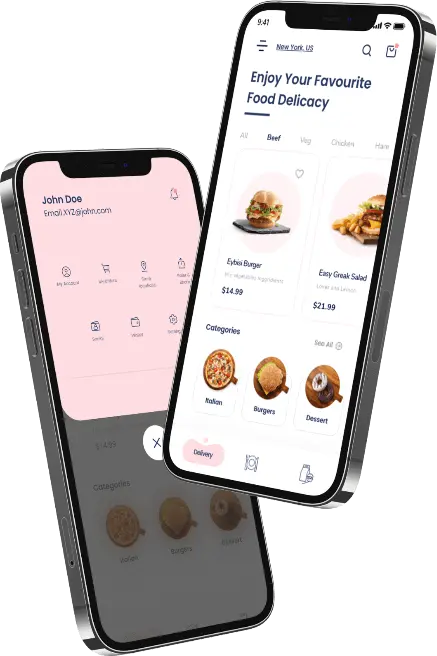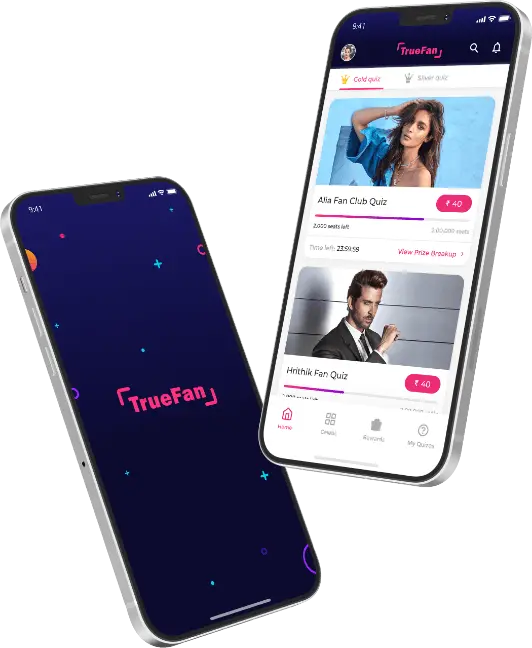20 Feb 2023
What is Restaurant POS Integration? How to Use it Effectively?
Abhinav Gupta

You have probably worked in a concession stand. It is one of the most stressful service jobs you can do. You are expected to provide fast and efficient service to many people, regardless of where you work. This is a stressful job. Everyone wants their food as quickly as possible. They will be angry if a line is clogged or a machine fails. It is your responsibility to make sure that this doesn’t happen. There is only so much that you can do. If you have a POS system for concession stand at your business, you can make significant changes to improve customer satisfaction and speed up line times. POS is an excellent investment for smooth operation at concession stands. It can be very cost-effective and will make your pos system for concession stand more efficient.
- Faster Payment: One large popcorn! Just swipe the card onto your tablet, and you’re done. It’s easy. It’s that simple. Your employees no longer need to struggle with card numbers. Instead, they can sign every customer’s name on the receipt with a pen and paper.With just a few swipes of their fingers and a few smiles, everyone is happy.
- More straightforward Transactions: Using a POS makes it easier to pay. Not only for the customer but also for the 20 or more other customers who may be waiting, eagerly awaiting their turn, and making their purchases. Have you ever seen someone hold up a line to pay for coins? POS eliminates the frustration of customers trying to spend with pennies, which can frustrate you and the other customers.
- Connectivity: All purchases at concession stores are linked through the point-of-sale system. This allows you to access financial information and storage/supplies. It’s easier than ever to ensure that you and your employees are fully synchronized to maximize efficiency.
Concession stands can be seen as a quick-service business constantly on the move. Therefore, when choosing your tools, concession stands require flexibility, mobility, cost, and affordability.
What is a Restaurant Point-of-Sale Integration?
Restaurant POS Integration adds new features to your point of sale system. This restaurant pos integration creates a link between your restaurant’s operations, and your POS software. It allows you to run additional functions and features that will help you manage your business
What is a POS System?
A POS system combines software and hardware that helps you manage your business operations, accept payment, manage inventory, sales, staff sessions, customers, etc.
While the term POS system was initially used to describe the cash register, today’s POS systems are software-based. As a result, you can use them on any device, tablet, smartphone, or desktop.
Physical POS, or point-of-sale, refers to where customers are checked out, such as at the cash register or checkout. Digitally, POS, however, is software that a cashier uses for ringing up customers and recording their sales.
POS systems ensure that no item is lost or miscalculated during checkout.
How Does the POS System Work?
To operate a POS, you don’t need to be an expert. Learn how the POS system works. Customers decide to purchase your products. The POS calculates the final price, and customers pay. This is how the POS process works:
Customers choose to buy your products
Customers can browse through your products and choose what they want to purchase. Next,customers can ask staff members to check product availability or prices (e.g., They can also request other sizes or colors. Next, the sales staff adds products to their cart using a barcode reader.
Modern POS systems can be accessed digitally from any device, including a smartphone or tablet. Some POS systems allow you to scan products and add them to your cart using your tablet or phone camera.
POS calculates the final price
After all, products have been added to the cart, and restaurant epos software calculates the total price plus taxes. Next, the POS system calculates the total price, including taxes. At this point, sales staff can apply discounts or gift cards. The system then updates the inventory to reflect that sold item.
Customers purchase products
The customer can finalize the purchase with a debit/credit card, cash, or loyalty points. Customers who pay cash automatically receive a change in the POS system. When a card is used, the bank must authorize the transaction.
The POS transaction has been completed
The transaction is finalized once the transaction has been processed. You will need to print a receipt or email it to your customers. The sale is complete when the product is handed to the customer.
What are the benefits of POS Software?
Investing in POS software is one of the best decisions for company expansion. This is because point-of-sale software can do much more than record transactions and collect orders.
Modern POS systems combine hardware and software. They often include a barcode scanner, card reader, cash drawer, and receipt printer. The touchscreen is the most common user interface. The most critical point-of-sale devices today are a tablet and a credit-card reader.
- Electronic POS software systems automate transaction processing and keep track of crucial sales information, streamlining retail operations.
- Basic systems also include software for managing data and electronic cash registers.
- Retailers can increase functionality by setting up network data-capture devices such as barcode scanners and card readers.
Moreover,
- Depending on the program’s capabilities, retailers can monitor price accuracy, inventory fluctuations, gross revenues, and sales patterns.
- Using integrated technology, retailers can spot inconsistencies and cash flow issues that could lead to profit loss or disrupt sales.
- POS systems that track inventory, purchase patterns, and customer service can help retailers reduce customer service problems. Retailers can target their marketing and purchase to match client behavior better.
It is the engine that drives your day, regardless of whether you work in e-commerce.
What to Look for in a POS System?
What card reader and app combination works best for me? Consider the following when choosing a card reader or POS app to run your concession stand.
1. User-Friendly
Concession stand card readers and POS options must be easy to use. The simpler the system is to use, the better. Out of all POS systems, point-of-sale apps are the most user-friendly.
2. Compatibility
The app must be compatible with both iOS and Android smartphones and tablets.
3. Functionality
Mobile orders can be placed by customers using a QR code. These are critical in situations with a long wait or customers who don’t want to wait. They can instead order and pay from their smartphones. Then, they’ll be notified by text when it’s time for pickup.
4. Prices
It would help if you always looked for low processing rates. Some apps charge transaction fees as high as 12%, while others may charge a monthly fee to maintain low transaction rates. It would help if you always looked for the lowest transaction rates.
Mobile orders should be considered. You can offset the platform fees by charging a service fee to the customer. It’s a great benefit not to have to wait in lines!
5. Features
This checklist will help you choose the right app.
- Multiple menus can be created and operated.
- QR code menu signs can be downloaded and printed.
- Countdown or inventory items (automatically disables sold-out items).
- Status of your order
- Flexible pickup/serve/delivery options
- To receive notifications by text,
- Custom service fee
- Tipping
- Geofence
- Automated reports
What software and hardware can a POS system contain?
A modern restaurant POS integration is a touchscreen terminal that can enter orders and process payments.
You can also track the performance of your restaurant. Each restaurant is unique, so finding a customizable POS for your needs is essential. It will help your employees work more efficiently, provide a great dining experience, and help you grow your business.
Key software features:
1. Food and Beverage POS systems: Food delivery app development company makes it easy to manage your menu from any location. You should be able to adapt your menus across multiple channels, including online ordering, on-premise, and third-party delivery.
2. Connected FOH and BOH operations: Get connected with your front-and-back-of-house. Real-time order firing, powerful kitchen display software, and kitchen screen software can connect you to the internet. In addition, this software can monitor item preparation times and notify servers or guests when an item is ready.
3. Payment processing: Guests should be able to pay using their preferred payment methods, such as cash, dips, taps, swipes, or mobile transactions via printed QR codes or digital wallets. Toast-integrated payment processors can help you create a valuable guest list by linking guest information and transaction history. This will allow you to understand your guests better and track who has ordered what.
4. Digital dine-in: Many restaurants are realizing the power of mobile ordering and payment technology to give their customers control over their placement and payment process. This technology allows guests to place orders and submit payments from their mobile devices. They can also order what they want, whenever they want it, no matter where they are served. They can pay with just a few taps, which will help improve your table turn times.
5. Off-premise ordering. All orders should flow seamlessly into one system, online and in-store. Modern restaurant POS integration allows you to create your digital storefront and send third-party delivery orders directly into the POS. This will eliminate the need to enter these orders manually.
6. Guest engagement: Your POS system should seamlessly link with all your marketing data, including email marketing, gift cards, and loyalty programs. This will allow you to deepen your relationship with your guests and keep them returning.
7. Payroll and employee management should be simple. Toast and other integrated platforms allow you to export your timesheets quickly into payroll—no more manual calculations or spreadsheets.
8. Analytics and reporting: Restaurants are just one business that needs to know their performance. Restaurant POS integration should give you the data insights needed to track sales and identify what is working so you can create the business you want.
Hardware for POS:
1. Modern POS technology, such as touch screen terminals, can increase your restaurant’s business efficiency. With durable hardware, they should be capable of enduring the demands of a restaurant and should also be able to ensure that your staff is always working at a restaurant’s pace.
Also Read – How Restaurant Industry Can Utilize Voice Recognition Technology?
2. Handheld POS systems – These devices allow your server to take orders and make payments from their table right from their hands. This makes it possible to provide faster service and better customer/guest support. In addition, they can be used to bust quick-service (QSR) concepts. Staff can accept orders and pay at the terminal regardless of where the guest is from.
3. Kitchen display systems (KDS), which allow staff to respond and receive orders in real-time, increase speed and communication between FOH and BOH. The screen can be tapped to quickly 86 an item, and servers will know if it is out of stock. In addition, KDS systems provide rich data about item prep times, which can help you improve your BOH efficiency and reduce your printing receipt paper costs.
4. Guest-facing displays: These displays are great for QSRs, such as cafes or fast-casual restaurants, where guests can easily view their orders, tip, and complete transactions. You can also sign up for your loyalty program and request a digital receipt by text or email.
5. Contactless payment technology: Although contactless payments are already in vogue, the COVID-19 pandemic dramatically increased their popularity. They are reliable, fast, and secure. Modern POS systems such as Toast allow contactless payments on the terminal, counter, or handheld POS. This will enable guests to use digital wallets such as Apple Pay or contactless card payments.
Conclusion
No matter how small or large your business, you will need a Point of Sale Solutions System as soon as your company starts selling products and services in person.
Point of Sale systems streamline the checkout process for you and your customers. As a result, they cut down on the time it takes to ring up sales and lower the risk of human errors such as calculation errors. Connect With Techugo, an on demand app development company.
Get in touch.
Write Us
sales@techugo.comOr fill this form















